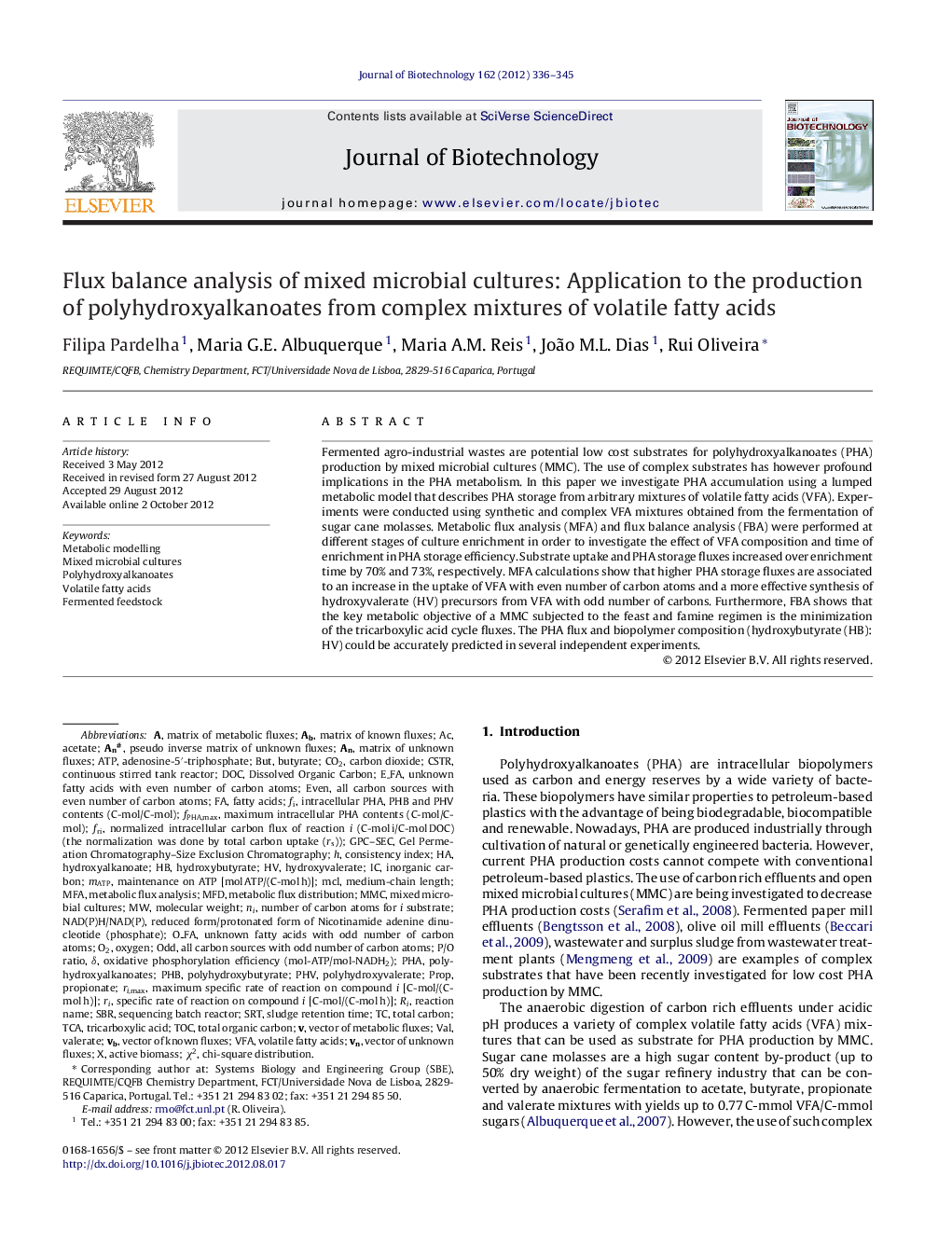| Article ID | Journal | Published Year | Pages | File Type |
|---|---|---|---|---|
| 23637 | Journal of Biotechnology | 2012 | 10 Pages |
Fermented agro-industrial wastes are potential low cost substrates for polyhydroxyalkanoates (PHA) production by mixed microbial cultures (MMC). The use of complex substrates has however profound implications in the PHA metabolism. In this paper we investigate PHA accumulation using a lumped metabolic model that describes PHA storage from arbitrary mixtures of volatile fatty acids (VFA). Experiments were conducted using synthetic and complex VFA mixtures obtained from the fermentation of sugar cane molasses. Metabolic flux analysis (MFA) and flux balance analysis (FBA) were performed at different stages of culture enrichment in order to investigate the effect of VFA composition and time of enrichment in PHA storage efficiency. Substrate uptake and PHA storage fluxes increased over enrichment time by 70% and 73%, respectively. MFA calculations show that higher PHA storage fluxes are associated to an increase in the uptake of VFA with even number of carbon atoms and a more effective synthesis of hydroxyvalerate (HV) precursors from VFA with odd number of carbons. Furthermore, FBA shows that the key metabolic objective of a MMC subjected to the feast and famine regimen is the minimization of the tricarboxylic acid cycle fluxes. The PHA flux and biopolymer composition (hydroxybutyrate (HB): HV) could be accurately predicted in several independent experiments.
► We propose a metabolic model for multiple VFA conversion to PHA. ► This is the first model attempting to describe PHA accumulation from more than 2 VFAs. ► PHA storage fluxes and HB:HV composition were accurately predicted by flux balance analysis for several independent experiments. ► The identified metabolic objective was the minimization of TCA activity. ► NADH2 accumulation dynamics was confirmed as a key factor for the regulation of PHA accumulation from complex VFA mixtures by MFA.
